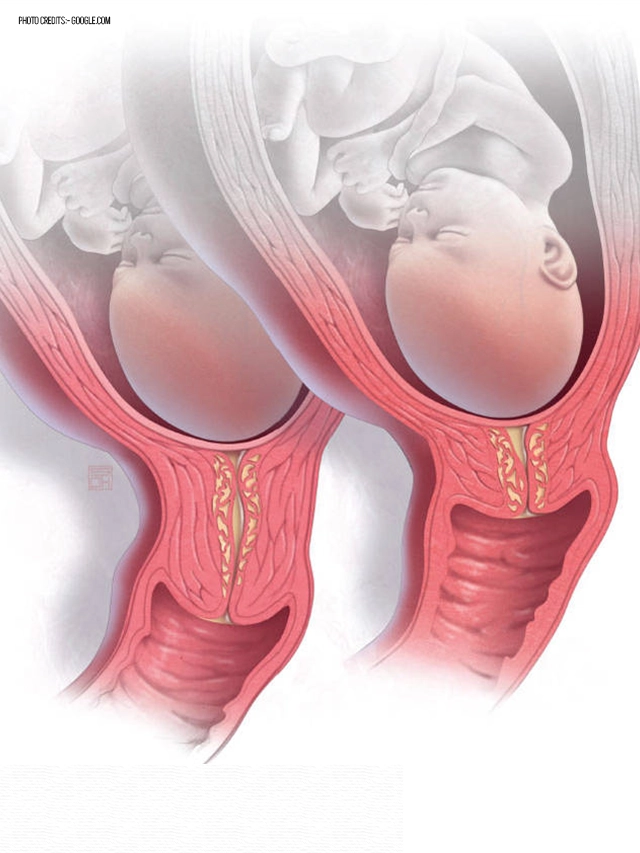Discover the importance of cervix length during pregnancy with our detailed guide and cervix length during pregnancy chart. Learn how cervical length affects pregnancy, trimester-specific measurements, risk factors for a short cervix, and preventive treatments to ensure a healthy pregnancy.
Introduction to Cervix Length During Pregnancy Chart:
Pregnancy is a beautiful yet complex journey, and with it comes the need to understand various aspects of your body’s changes. One crucial aspect that often goes under-discussed is cervix length during pregnancy. The cervix, the lower part of the uterus, plays a vital role in maintaining a healthy pregnancy. Its length is an important factor that healthcare professionals monitor throughout pregnancy to prevent complications like preterm birth.
Understanding the significance of cervical length can help you navigate your pregnancy with more confidence and awareness. In this detailed guide, we’ll cover every aspect of cervix length, from its normal measurements throughout each trimester to the factors affecting its changes, as well as the importance of regular monitoring. By the end, you’ll have a thorough understanding of what to expect and how to ensure a healthy pregnancy.
What Is Cervix Length During Pregnancy:
The cervix length is the measurement of the cervix, which is the narrow, lower portion of the uterus that connects to the vagina. In pregnancy, the cervix plays a critical role in keeping the baby safely inside the uterus. Early in pregnancy, the cervix remains long, firm, and closed, providing a strong barrier. As you approach the end of your pregnancy, the cervix begins to soften, shorten, and eventually dilate in preparation for labor.
Throughout pregnancy, the length of the cervix is monitored because significant changes, particularly shortening before full term, can indicate a higher risk of preterm labor. Healthcare providers typically measure cervical length via transvaginal ultrasound, a reliable and safe method that provides an accurate assessment of the cervix’s condition.
In early pregnancy, a normal cervix length ranges from 3 to 5 cm. It gradually shortens as labor approaches..
Why Cervical Length Matters During Pregnancy:
Cervical length during pregnancy matters because it is a key indicator of how well your body is preparing to carry the baby to full term. A normal cervix length in early pregnancy is typically between 3 and 5 centimeters. If the cervix starts to shorten prematurely (before 37 weeks), this can indicate a risk of preterm birth.
Premature shortening of the cervix might mean that the body is preparing for labor too soon. The cervix may open or dilate early, which can increase the risk of preterm birth. Preterm birth comes with a host of risks for the baby, including underdeveloped organs, respiratory problems, and other health complications. Therefore, monitoring the cervix’s length is crucial for identifying risks early and taking preventive measures to ensure a healthy pregnancy.
Women with a history of preterm labor, those carrying multiples, or those with certain medical conditions may be at higher risk for cervical shortening. Regular monitoring can help detect any issues early, and doctors may recommend treatments like progesterone supplementation, cerclage, or bed rest to prevent premature labor.

Cervical Length by Trimester: What You Should Know:
To understand cervical length better, it’s helpful to know the normal cervical length measurements by trimester. Although every woman’s body is different, and some variation is normal, there are general guidelines for cervical length at different stages of pregnancy.
First Trimester (0-12 Weeks): During the first trimester, the cervix remains long and firm, measuring between 3 and 5 centimeters. At this early stage of pregnancy, the cervix’s job is to keep the growing fetus safely inside the uterus. In most cases, the cervix will not shorten or show significant changes during this time.
Women who have a history of cervical incompetence (when the cervix begins to open too early) or who have had cervical surgery may need early monitoring to ensure that the cervix remains at a healthy length.
Second Trimester (13-28 Weeks): As pregnancy progresses into the second trimester, the cervical length remains fairly stable but might shorten slightly. On average, the cervix should measure around 3-4 centimeters at this stage. For women at risk of preterm labor, this is when doctors begin closely monitoring the cervix for any signs of early shortening or dilation.
Women at higher risk, such as those who have experienced previous preterm births or have cervical surgery in their medical history, may have their cervix measured more frequently during this period. Healthcare providers may suggest transvaginal ultrasound scans every two to four weeks to track any changes in cervical length.
Third Trimester (29-40 Weeks): In the third trimester, the body begins to prepare for labor, and as a result, the cervix naturally begins to shorten. By this time, the cervix may measure between 2-3 centimeters, which is considered normal as the body gets ready for the baby’s delivery. However, premature shortening or significant changes in the cervix can still indicate a risk of early labor.
Toward the end of the third trimester, the cervix softens and may begin to dilate as the body prepares for childbirth. This process is known as cervical ripening, and it occurs in the final weeks before delivery. A healthcare provider will continue to monitor the cervix during this time to ensure that the baby stays safe and that labor does not begin prematurely.
Cervical Length Chart: Typical Measurements:
Here is a quick summary of typical cervical length measurements by trimester.
- First Trimester (0-12 weeks): 3-5 cm
- Second Trimester (13-28 weeks): 3-4 cm
- Third Trimester (29-40 weeks): 2-3 cm
It’s important to note that these measurements are general guidelines. Some women may have slight variations, and as long as the cervix is not showing signs of premature shortening or dilation, there is usually no cause for concern.

Here is a detailed chart for cervix length during pregnancy with additional notes on the significance of the measurements.
| Trimester | Weeks | Normal Cervix Length | Significance |
|---|---|---|---|
| First Trimester | 0 – 12 weeks | 3 to 5 cm | During early pregnancy, the cervix remains long and firm to protect the growing fetus. A length of 3 to 5 cm is typical, indicating a healthy, closed cervix. |
| Second Trimester | 13 – 20 weeks | 4 to 5 cm | At this stage, the cervix usually stays long and stable. Monitoring begins for women with risk factors for cervical shortening. |
| Second Trimester | 21 – 24 weeks | 3.5 to 4.5 cm | Slight shortening may occur. Cervical length of 3.5 cm or more is considered normal. Shortening below 3 cm may indicate risk of preterm labor. |
| Second Trimester | 25 – 28 weeks | 3 to 4 cm | Cervical length is closely monitored if shortening is detected. A cervix length under 2.5 cm at this stage increases preterm birth risk. |
| Third Trimester | 29 – 32 weeks | 2.5 to 4 cm | Natural shortening begins as the body prepares for labor. Monitoring is essential for women with a history of preterm labor or cervix issues. |
| Third Trimester | 33 – 36 weeks | 2 to 3 cm | The cervix gradually softens and shortens. Cervical ripening may begin, but shortening below 2 cm can still pose risks if too early. |
| Third Trimester | 37 – 40 weeks | Less than 2 cm | In the final weeks, the cervix typically shortens further and begins to dilate as labor approaches. Less than 2 cm is common at term, preparing for childbirth. |
This chart outlines the typical cervix length during each stage of pregnancy, with explanations on how.
How Cervical Length Is Measured:
The most accurate method for measuring cervical length is through a transvaginal ultrasound. This procedure involves inserting a small ultrasound probe into the vagina, which allows for a clear view of the cervix and its length. The procedure is painless and typically takes just a few minutes to complete.
In cases where a woman is at high risk of preterm labor, doctors may recommend more frequent cervical length measurements. The transvaginal ultrasound can be repeated every few weeks, allowing healthcare providers to monitor any changes in cervical length and intervene if necessary.
There are other ways to assess cervical health during pregnancy, such as manual exams or abdominal ultrasounds, but these are less accurate for measuring the cervix length. Transvaginal ultrasound remains the gold standard for assessing cervical length.
What Causes a Short Cervix During Pregnancy:
A short cervix occurs when the cervix begins to shorten or soften too early in pregnancy, potentially signaling the risk of preterm labor. Several factors can contribute to a shortened cervix.
Previous Preterm Birth: Women who have had preterm deliveries in previous pregnancies are at higher risk of a short cervix in future pregnancies. This is because the cervix may be more likely to weaken or shorten prematurely.
Cervical Incompetence: Some women have a condition known as cervical incompetence, where the cervix begins to open or dilate too early, even without labor contractions. This can result in preterm birth if not treated.
Multiple Pregnancies: Carrying twins, triplets, or other multiples can increase pressure on the cervix, causing it to shorten or weaken faster than in a singleton pregnancy.
Previous Cervical Surgery: Women who have undergone surgeries like a cone biopsy or LEEP procedure (Loop Electrosurgical Excision Procedure) may have a higher risk of cervical shortening because these surgeries can remove parts of the cervix, weakening its structural integrity.
Uterine Anomalies: Certain abnormalities in the uterus, such as a septate uterus or bicornuate uterus, can also increase the risk of a short cervix because of uneven distribution of pressure on the cervix.
What Are the Risks of a Short Cervix:
The primary risk associated with a short cervix is preterm labor. Preterm labor is defined as labor that occurs before 37 weeks of pregnancy. Babies born prematurely face increased health risks, including breathing difficulties, underdeveloped organs, and a higher likelihood of needing intensive medical care after birth.
A short cervix can also increase the risk of cervical insufficiency, a condition in which the cervix opens too early, often leading to miscarriage or premature birth. Women with a short cervix may not experience symptoms, which is why regular monitoring is so important.
Treatment Options for a Short Cervix:
If your healthcare provider determines that you have a short cervix, there are several treatment options available to help reduce the risk of preterm labor.
Progesterone Therapy: Progesterone is a hormone that helps maintain the pregnancy. In women with a short cervix, progesterone supplements (either in the form of vaginal suppositories or injections) can help reduce the risk of preterm labor by promoting the cervix’s ability to stay firm and closed.
Cerclage: A cerclage is a surgical procedure where the doctor places a stitch around the cervix to help keep it closed. This is usually done in women with a history of cervical incompetence or a short cervix. The stitch is removed later in pregnancy, typically around 37 weeks, when it’s safer for labor to begin.
Bed Rest or Activity Restrictions: In some cases, doctors may recommend bed rest or significant activity restrictions for women with a short cervix. The idea is to reduce pressure on the cervix, allowing it to remain closed for as long as possible. While bed rest can help in some situations, its effectiveness varies, and it is not always recommended.
Pessary: A pessary is a small silicone device inserted into the vagina to help support the cervix and uterus. It is sometimes used in women with a short cervix to help prevent preterm labor.
Cervical Length Monitoring for High-Risk Pregnancies:
If you have been identified as having a high-risk pregnancy—whether due to a history of preterm birth, cervical surgery, or other factors—regular cervical length monitoring is crucial. Your healthcare provider will likely recommend more frequent transvaginal ultrasounds to track any changes in the cervix length throughout your pregnancy.
High-risk women may also be candidates for progesterone treatment or cerclage to help prevent premature birth. If you’re unsure whether you need additional monitoring or treatments, speak with your healthcare provider to discuss your specific risk factors and options.
FAQ
Most frequent questions and answers
Cervix length refers to the measurement of the cervix, which is crucial for maintaining a healthy pregnancy.
Cervix length helps assess the risk of preterm labor and complications by indicating how well the cervix is supporting the pregnancy.
In early pregnancy, a normal cervix length ranges from 3 to 5 cm. It gradually shortens as labor approaches.
Conclusion:
Understanding cervical length during pregnancy is crucial for maintaining a healthy pregnancy and preventing complications like preterm labor. By monitoring cervical length through transvaginal ultrasounds, healthcare providers can identify potential risks early and intervene if necessary. Whether you’re at high risk for a short cervix or simply want to stay informed about your body’s changes, knowledge of cervical length and its importance will give you the tools you need for a successful pregnancy.








